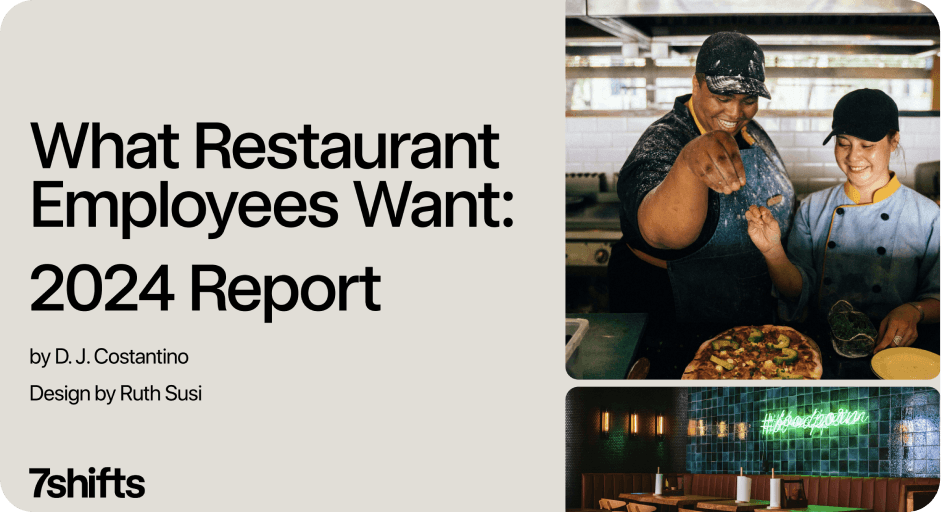Restaurateurs throughout Ontario are reeling after the May 2017 announcement of a drastic 31.6% provincial minimum wage hike. Because the restaurant industry relies on minimum wage labor to stay profitable—particularly in light of rising input costs—the upcoming overhaul of both the Employment Standards Act and Labor Relations Act poses a significant threat to restaurants’ already paper-thin margins.
As of 2013, 26.9% of Canadians work in the foodservice industry, the vast majority of whom are paid at minimum wage. As an independent owner or a franchisee, you might be wondering: what does the Ontario minimum wage increase mean for me?
Here’s what you need to know.
Why the Ontario Minimum Wage Increase?
Minimum wage legislation is under provincial jurisdiction, which means the hourly amount varies from coast to coast. Currently, Ontario’s minimum wage is set at $11.40, a rate higher than both neighboring Manitoba ($11.00) and Quebec ($10.75).

Following in Alberta’s footsteps, Ontario’s restaurant minimum wage will be increased using a phased approach. The wage will jump to $11.60 on October 1, 2017, with subsequent increases slated for January 1, 2018, ($14.00) and January 1, 2019, ($15.00). When it reaches this level, Ontario will be tied for the highest minimum wage in Canada alongside Alberta.
According to the Globe and Mail, 25% of Ontario employees—a total of 1.46 million people—earned less than $15.00 per hour in 2016. The government’s Changing Workplaces Review concluded that the emergence of new technologies, alongside fewer union jobs and a shrinking manufacturing sector, places these men and women at increased risk of job loss, redundancy, and ongoing financial duress.

The Fair Workplaces, Better Jobs Act is therefore aimed at creating “more opportunity and security for workers across Ontario.” Proposed changes include:
- Increased minimum vacation time
- Increased personal leave allowances (both paid and unpaid)
- A simplified formula for calculating holiday pay
- Paying casual, part-time, temporary, and seasonal employees at the same rate as full-time employees
Ontario Labor Laws on Employee Scheduling
There are also a number of changes specific to scheduling. We’ve highlighted four of them because of their particular interest to restaurant operators.
Employees will have the right to request schedule or location changes after having been employed for three months, without fear of reprisal.
What you can do: First off, if you schedule staff across multiple locations, be sure that your existing staff scheduling system can accommodate this. If you don’t have an easy way to schedule employees across locations, meeting this new requirement will take some serious legwork. Secondly, ensure that you have a dedicated process in place for staff to request changes, such as employee chat apps.
Employees who regularly work more than three hours per day, but upon reporting to work are given fewer than three hours, must be paid three hours at their regular rate of pay.
What you can do: If you use a restaurant time-clocking system (like 7punches), it’s easy to correlate the time worked with payroll requirements. Run a report in your time-clocking application to get a report on hours worked, then note all results showing fewer than three hours. You can then manually adjust these in your payroll system to reflect the appropriate payout.
Employees can refuse to accept shifts without repercussion if their employer asks them to work with fewer than four days’ notice.
What you can do: This one is simple. Create your staff schedule at least a week in advance so that you are not scheduling at the last minute. Your employees will thank you—knowing their shifts in advance means that they can plan to accommodate them.
If a shift is cancelled within 48 hours of its start, employees must be paid three hours at their regular rate of pay.
What you can do: No amount of planning can control reservation cancellations or change how inclement weather causes cancelled shifts, but managers can mitigate risk by taking a close look at their POS data or restaurant dashboard to spot trends in sales and labor. Are Thursday nights historically dead? Perhaps that means you don’t need to schedule as many shifts as you may think.
How Ontario Minimum Wage Affects Restaurants
There are two sides to this coin:
On the one hand, the Ontario minimum wage increase quite literally puts more money in the pockets of more than a quarter of Ontario’s workforce, creating opportunity for stability, security, and improved spending power. At the current $11.40 hourly rate, a full-time minimum-wage employee earns an annual income of $23,712; when this increases to $15.00, that same employee will earn an additional $7,500 each year and move into what is describe as a ‘living wage’.
However, Restaurants Canada is protesting the change, claiming the increase will result in “fewer jobs, fewer hours, and fewer employers.” They reported an average pretax profit of 3.4% for the province’s restaurants, and forecasted an additional $47,000 in costs. This increase would cut into restaurants’ profitability and potentially lead to closures—directly affecting operators and those workers which the change in legislature aims to assist.
Not surprisingly, many local business owners agree. From restaurants to retail, owners and operators are banding together to voice their concern over rising labour costs, payroll taxes, and employer contributions for things like employment insurance, Canada Pension Plan, Workplace Safety and Insurance Board, and other wage-linked remittances.
Dealing With the Ontario Minimum Wage Increase
Naturally, very few restaurateurs want to thin out their staff for the sole purpose of protecting a bottom line. Business owners are empathetic to the fact their staff have families and expenses, too.
To help you adapt to these changing market forces without jeopardizing your restaurant’s profitability and sustainability, here are four cost-saving strategies:
1. Increase Labor Productivity. A report by the Centre for Economic and Policy Research identified labor productivity as one of the most common ways to adapt to a widespread market change. Sure, there may be situations when jobs or hours must be trimmed, but instituting new technologies like self-order kiosks or team communication tools has been shown to boost labor efficiency.
2. Play with Your Food. According to Canada’s Food Price Report, food prices have and will continue to increase above standard inflation rates. Short of ramping up menu item prices, there are a number of other tactics to manage food-related increases: buying in bulk, upselling profitable items, introducing seasonal dishes, and so on. These efforts can create wiggle room in your profit margin to cover off corresponding labor increases.
3. Review Your Restaurant’s Compensation Plan. Set aside time to review your staff contracts, paying special mind to any pay stipulations. This will help you better estimate labor cost increases and ensure your pay structure aligns with your business structure. It also ensures you are conscious of inadvertently making more overtime than you need to.
4. Stay on Top of Scheduling Data. In light of the scheduling changes we discussed above, it’s essential restaurant managers access the insights available to them via their restaurant employee scheduling software. Keeping a watchful eye on labor cost percentages, monitoring scheduling variances, and enforcing your scheduling with time clocking software are all great ways to manage your labor costs.

Jessica Reimer, Author
Jessica Reimer
Author
Jessica Reimer was a Content Producer for 7shifts. She worked with the 7shifts marketing team to help customers worldwide save time scheduling, reduce labor costs, and improve communication.
